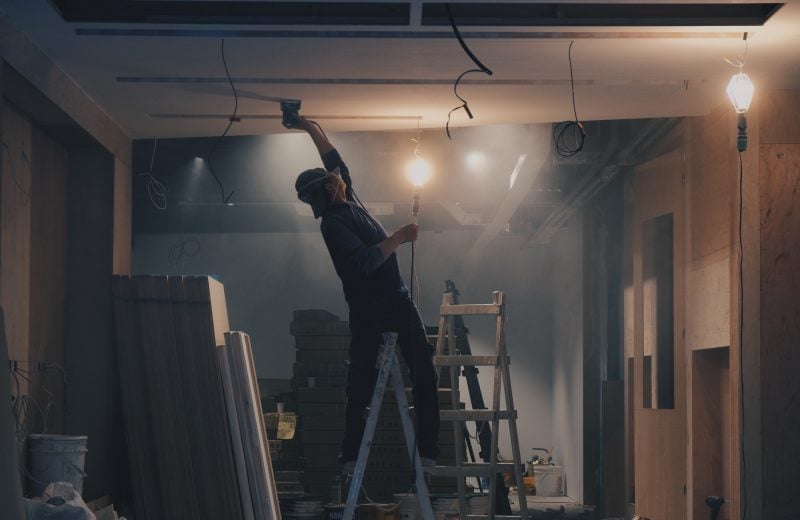Asbestos was often used in construction up until the late 1990s. Before we knew of its risks, it was regularly used in buildings, roofs and flooring for insulation purposes. Today, asbestos is banned in the UK, but buildings constructed before 2000 may still have lingering asbestos throughout.
In the 21st century, asbestos is most likely to rear its head when it is disturbed in older buildings. There is also a risk that workers who have been exposed to asbestos can carry the fibres on their clothing which others could breathe in.
There were over 5,000 asbestos-related disease deaths in 2020 alone, including lung cancer, asbestosis and mesothelioma. With plenty of older homes still containing asbestos-related products that put us at risk of deadly diseases, it is important to know how to remove such dangerous materials safely.
An asbestos removal company can help, and there are many questions to keep in mind to get the best service and safest outcomes.
What are the main dangers of asbestos removal?
If you need asbestos removed from your home or building, you might be concerned about the health risks. Exposure to such fibres can lead to dangerous diseases – and maybe even death. The improper removal of asbestos can send microscopic fibres into the air, causing anyone who inhales them to become incredibly ill. The body simply cannot break down the tiny microfibres due to the extreme longevity of asbestos.
The removal of asbestos can be so dangerous that The Environmental Protection Agency advises to not even touch damaged asbestos-containing products without the help of a specialist removal company. Professionals follow specific processes and abide by the law to safely remove or seal asbestos fibres.
Does every asbestos fibre need to be removed?
Despite its dangers, not all asbestos fibres need to be removed. The EPA states that undisturbed asbestos-containing materials are not as likely to cause a health threat. In some cases where asbestos fibres are in good condition, it’s best to leave them alone.
Materials that are noticeably crumbling, on the other hand, should be removed as soon as possible. This kind of asbestos poses a risk because it may break down even more and release further fibres into the air if removal is attempted.
Can I still live at home during asbestos removal?
It is advised that you do not stay in your home during the removal process, but that can depend on the removal company you are working with. Some may approve your stay, depending on the amount of asbestos that is lingering. But, regardless of the severity, it’s important to consider staying away completely until the asbestos is gone entirely.
Can I remove the asbestos myself?
It’s not impossible to remove asbestos by yourself if you live alone, so it is recommended that you leave it to the professionals. There are currently no laws in place that prevent you from a DIY removal, but without proper training, you pose a threat of inhaling seriously deadly fibres. Overall, the risk of exposure is simply too high.
How long does the removal process take?
Depending on the case, an asbestos removal job will vary in time. This could be anything from a matter of days to several months – to even years if it is a serious health concern. A professional company will provide an idea of the length of a case once they have carried out an inspection.
The important thing to remember is that no matter how long it takes, it’s essential that the time invested will ensure your home is safe and free of asbestos. Corporate buildings may take an efficient planning process to ensure the business can operate at a safer location during the removal process.
All removal companies are legally required to give The Health and Safety Executive 14 days notice before the removal.
How much does asbestos removal cost?
Asbestos removal can cost anywhere from around £50 for an initial evaluation to well into the thousands, depending on the severity of the situation. Smaller amounts can be removed quickly and easily, and at a lower cost. Bigger projects require more materials and time, where costs will quickly add up. The best step to take is to get in touch with an asbestos removal company and request a quote.
Asbestos disposal at Aasvogel
As a complete waste management provider, Aasvogel is a fully licensed asbestos disposal site for cement-bonded asbestos waste. This means that, if required, we can come and identify and collect any unwanted hazardous asbestos or receive it directly at our transfer station in Wantage, by advanced agreement.
We also offer a range of skips, roll-on/roll-off and a hazardous ‘Wait & Load’ service in our 7.5 tonnes caged tipper to aid the safe disposal of asbestos waste. It’s important to note that all of these services are fully dependent upon the provision of premises codes and consignment notes.
Dispose of any unwanted and hazardous asbestos
If you are looking to dispose of any unwanted and hazardous asbestos, you must contact us first, so that we can prepare for the safe collection or delivery of any asbestos.



